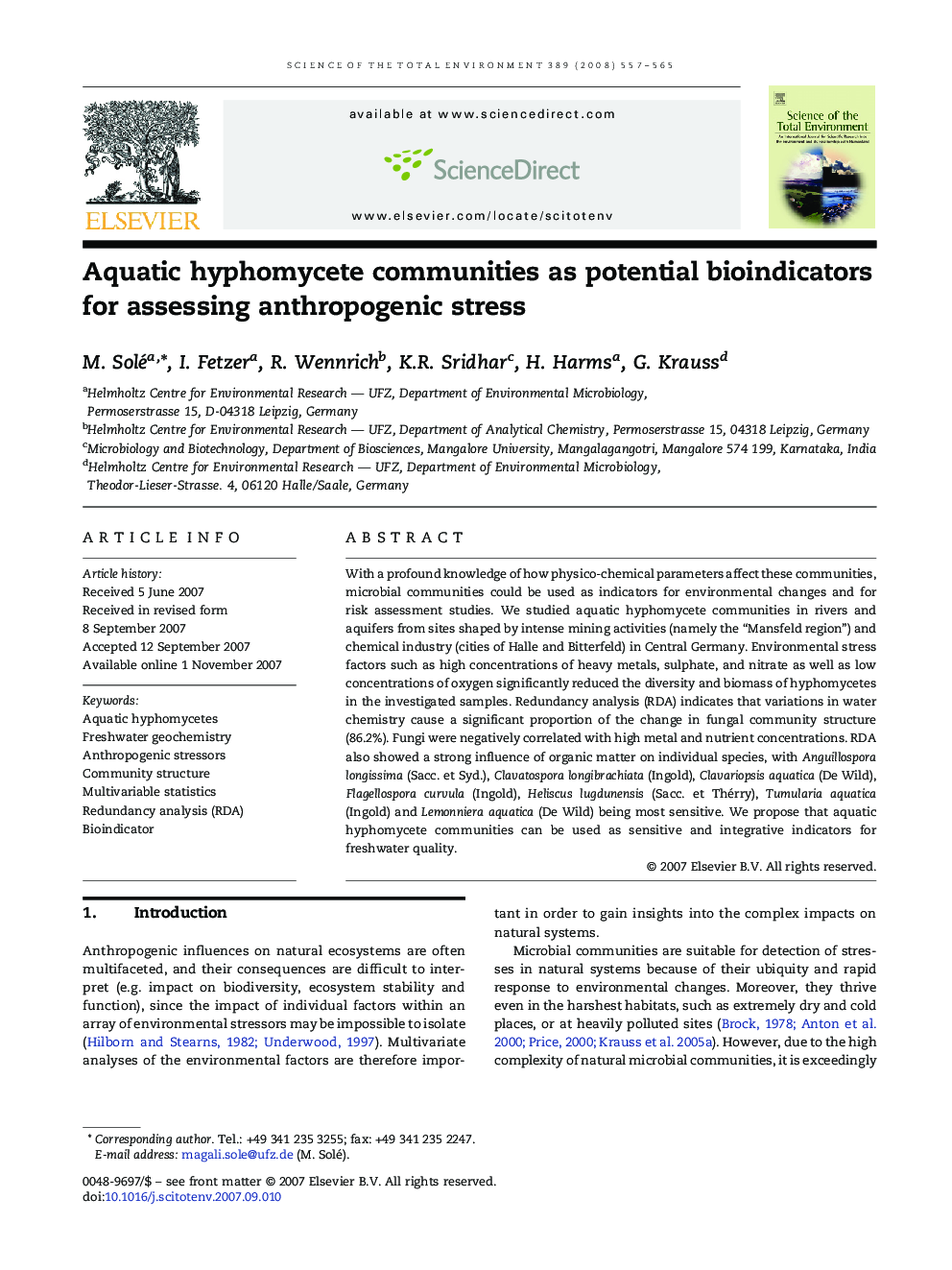| Article ID | Journal | Published Year | Pages | File Type |
|---|---|---|---|---|
| 4432739 | Science of The Total Environment | 2008 | 9 Pages |
With a profound knowledge of how physico-chemical parameters affect these communities, microbial communities could be used as indicators for environmental changes and for risk assessment studies. We studied aquatic hyphomycete communities in rivers and aquifers from sites shaped by intense mining activities (namely the “Mansfeld region”) and chemical industry (cities of Halle and Bitterfeld) in Central Germany. Environmental stress factors such as high concentrations of heavy metals, sulphate, and nitrate as well as low concentrations of oxygen significantly reduced the diversity and biomass of hyphomycetes in the investigated samples. Redundancy analysis (RDA) indicates that variations in water chemistry cause a significant proportion of the change in fungal community structure (86.2%). Fungi were negatively correlated with high metal and nutrient concentrations. RDA also showed a strong influence of organic matter on individual species, with Anguillospora longissima (Sacc. et Syd.), Clavatospora longibrachiata (Ingold), Clavariopsis aquatica (De Wild), Flagellospora curvula (Ingold), Heliscus lugdunensis (Sacc. et Thérry), Tumularia aquatica (Ingold) and Lemonniera aquatica (De Wild) being most sensitive. We propose that aquatic hyphomycete communities can be used as sensitive and integrative indicators for freshwater quality.
